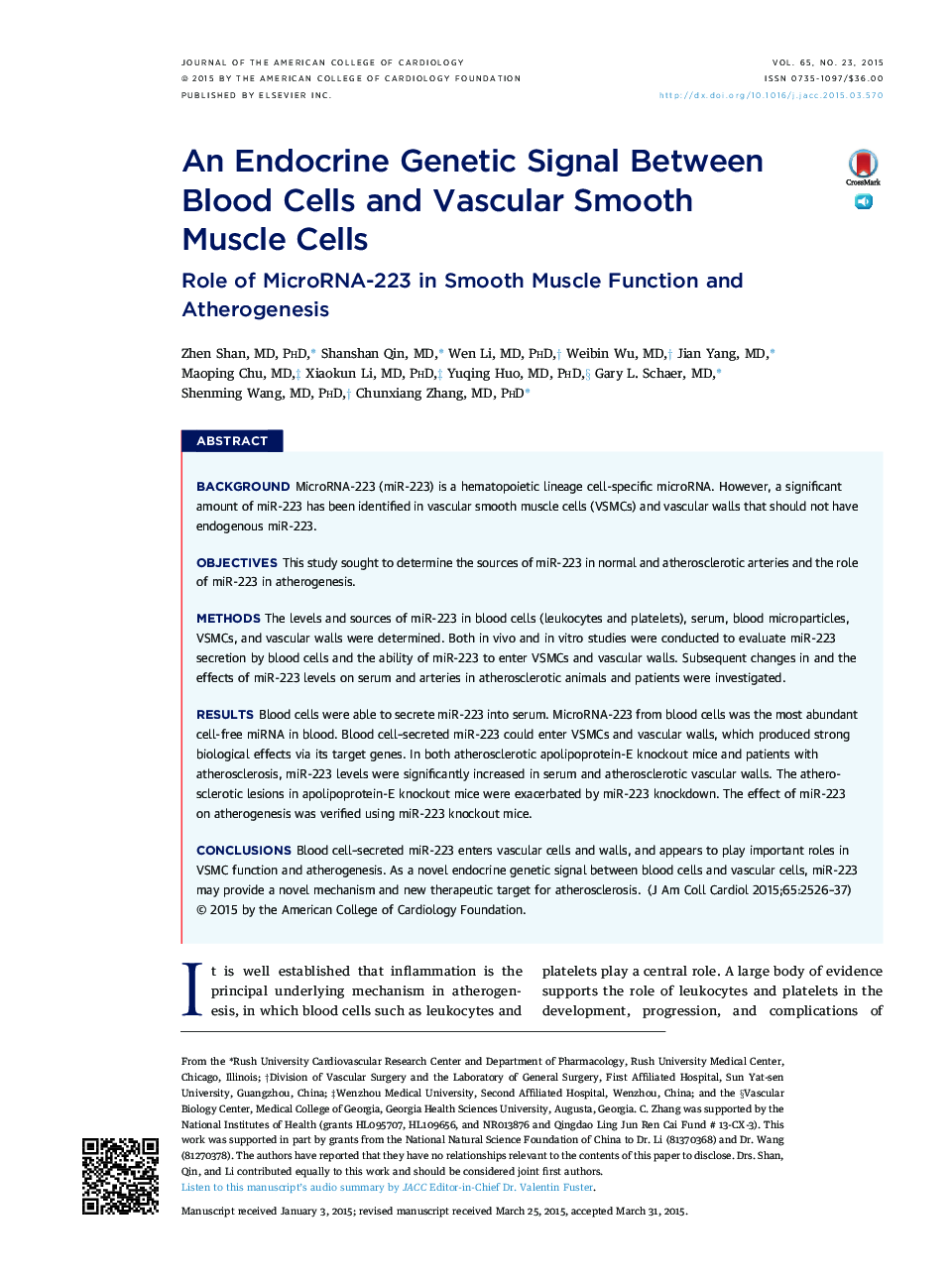| Article ID | Journal | Published Year | Pages | File Type |
|---|---|---|---|---|
| 2944086 | Journal of the American College of Cardiology | 2015 | 12 Pages |
BackgroundMicroRNA-223 (miR-223) is a hematopoietic lineage cell-specific microRNA. However, a significant amount of miR-223 has been identified in vascular smooth muscle cells (VSMCs) and vascular walls that should not have endogenous miR-223.ObjectivesThis study sought to determine the sources of miR-223 in normal and atherosclerotic arteries and the role of miR-223 in atherogenesis.MethodsThe levels and sources of miR-223 in blood cells (leukocytes and platelets), serum, blood microparticles, VSMCs, and vascular walls were determined. Both in vivo and in vitro studies were conducted to evaluate miR-223 secretion by blood cells and the ability of miR-223 to enter VSMCs and vascular walls. Subsequent changes in and the effects of miR-223 levels on serum and arteries in atherosclerotic animals and patients were investigated.ResultsBlood cells were able to secrete miR-223 into serum. MicroRNA-223 from blood cells was the most abundant cell-free miRNA in blood. Blood cell–secreted miR-223 could enter VSMCs and vascular walls, which produced strong biological effects via its target genes. In both atherosclerotic apolipoprotein-E knockout mice and patients with atherosclerosis, miR-223 levels were significantly increased in serum and atherosclerotic vascular walls. The atherosclerotic lesions in apolipoprotein-E knockout mice were exacerbated by miR-223 knockdown. The effect of miR-223 on atherogenesis was verified using miR-223 knockout mice.ConclusionsBlood cell–secreted miR-223 enters vascular cells and walls, and appears to play important roles in VSMC function and atherogenesis. As a novel endocrine genetic signal between blood cells and vascular cells, miR-223 may provide a novel mechanism and new therapeutic target for atherosclerosis.
